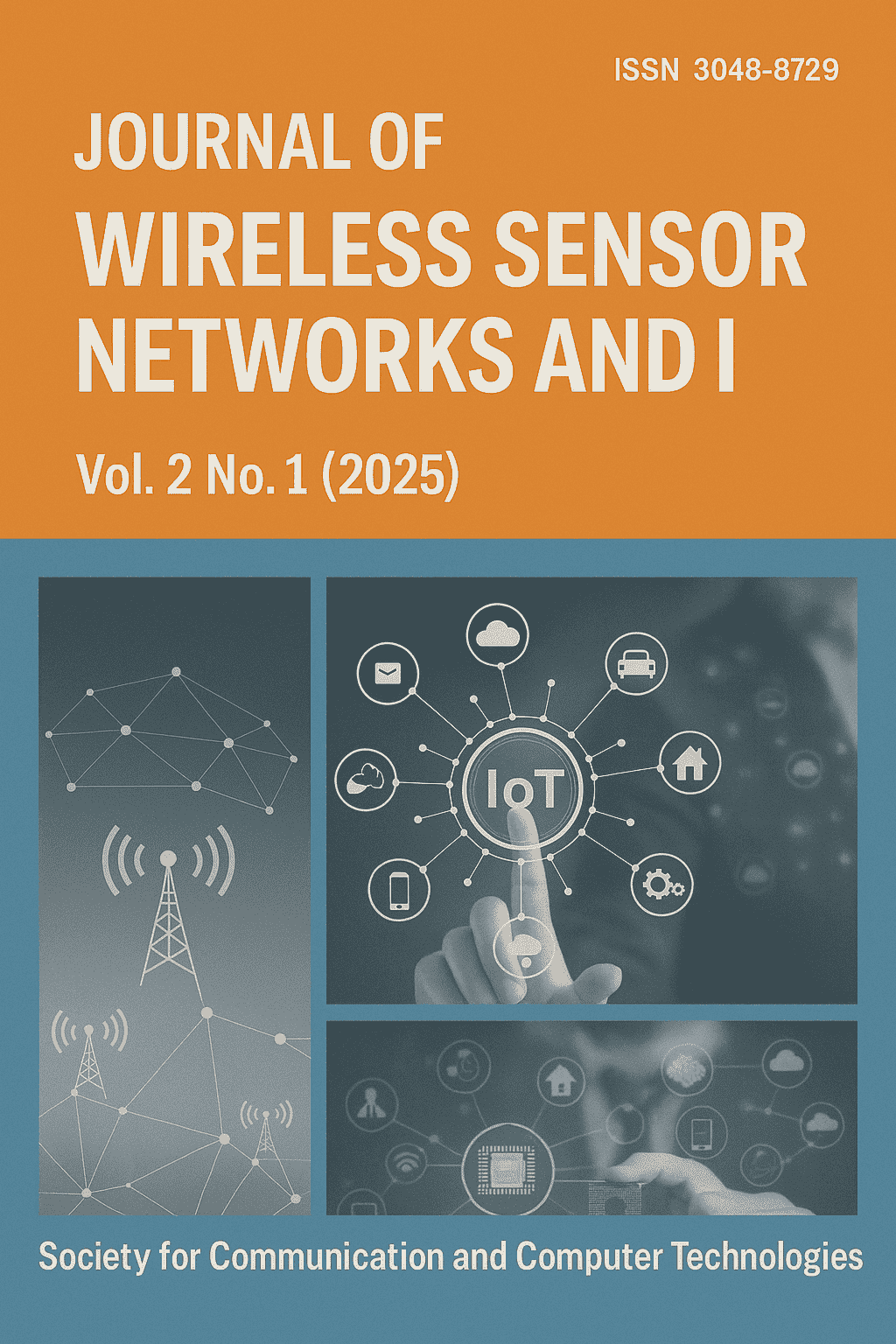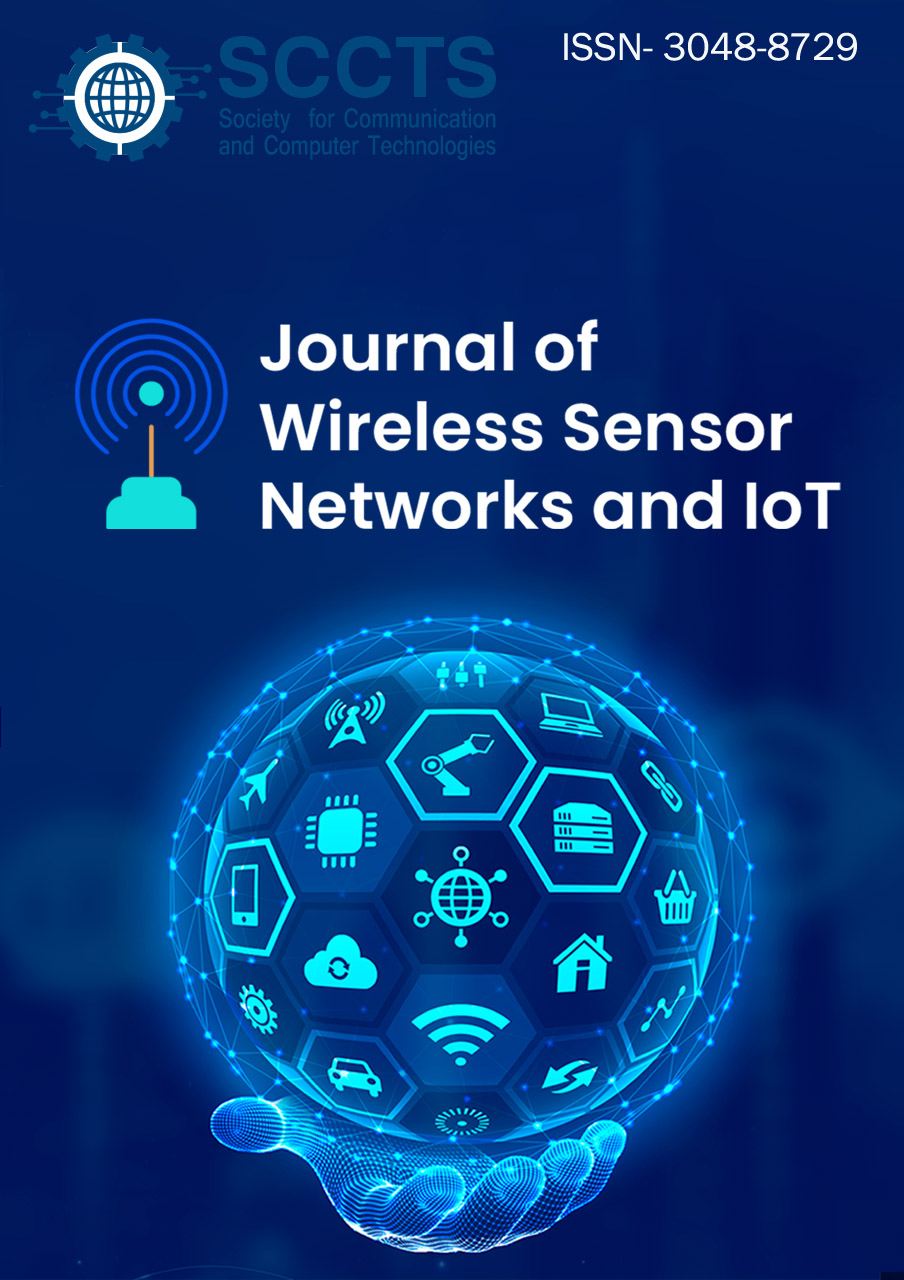Revolutionizing Healthcare: Wearable IoT Sensors for Health Monitoring Applications: Design and Optimization
DOI:
https://doi.org/10.31838/WSNIOT/02.01.04Keywords:
IoT Edge Devices;, Internet of Vehicles;, Wireless Network Security;, IoT for Disaster Management;, IoT Sensing TechnologiesAbstract
As the intersection between wearable technology and the Internet of Things
(IoT) becomes increasingly entrenched, this is ushering in the era of person
alized healthcare. At the same time there is an urgent need for new solutions
that enable continuous monitoring of health parameters outside of clinical
settings, as populations are getting older and more and more often suffer
from chronic diseases. To address this challenge, wearable IoT sensors are
emerging as powerful tools to conduct real time health tracking and early
detection of potential disease. In this paper, we explore how the cutting
edge developments in wearable IoT device design and optimization for health
monitoring applications could revolutionize patient care and medical deci
sion making. It was due to the rapid development of the microscopically sized
sensors, wireless communication devices, and data analytical techniques that
have led to the emergence of a whole new generation of wearable health
monitoring devices. They’re smart, connected gadgets, which means they
can even track your vital signs, physical activity, sleep patterns, and other
kinds of physiological parameters around the clock. With IoT connectivity,
collected data can be smoothly transmitted to solve providers to carry out
proactive and personalized interventions. There are however hurdles to the
widespread adoption of wearable health monitors. There are a number of key
challenges to ensuring user comfort for long term wear, maximizing battery
life and developing robust algorithms for accurate health predictions. In this
article we look into how these obstacles have been overcome with flexible
electronics, energy harvesting techniques and advanced machine learning
algorithms specific to wearable applications. In this work, we analyze how
wearable IoT sensor researchers and engineers are pressing the limits of
wearable IoT sensor design, from novel materials and form factors to opti
mize comfort to edge computing architectures enabling on device analytics.
And we’ll also discuss how artificial intelligence and IoT technologies can be
integrated to extract useful knowledge from the deluge of data produced by
these devices. We also explore enabling applications in such emerging areas
of medical domain as well as potential of wearable IoT sensors in enabling
disease management, rehabilitation as well as preventive health care.






